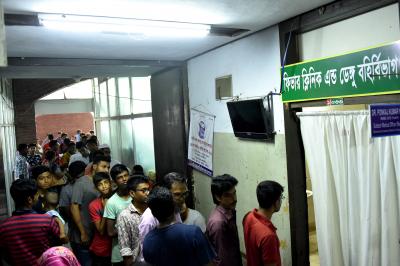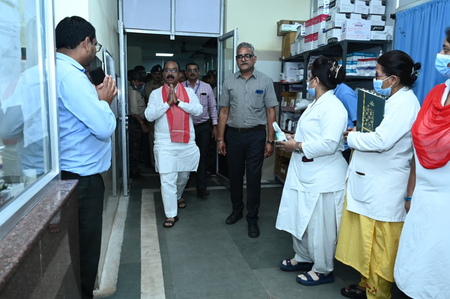
London, Dec 25 (IANS) British researchers have discovered how risk of Covid infection varies with proximity and duration of exposure to an infected person.
To understand the likelihood of SARS-CoV-2 transmission after exposure, researchers from the University of Oxford, UK used data from the NHS Covid app with 7 million contacts in England and Wales.
Their study, published in the journal Nature, revealed that more than proximity, the duration of exposure to people with Covid may increase the likelihood of infection.
Longer exposures at greater distances had similar risk to shorter exposures at closer distances.
The probability of transmission confirmed by a reported positive test increased initially linearly with duration of exposure (1.1 per cent per hour) and continued increasing over several days.
While most exposures were short, transmissions typically resulted from exposures lasting one hour to several days.
Households accounted for about 6 per cent of contacts but 40 per cent of transmissions.
“With sufficient preparation, privacy-preserving yet precise analyses of risk that would inform public health measures, based on digital contact tracing, could be performed within weeks of a new pathogen emerging,” said Luca Ferretti, from Oxford’s Department for Medicine.
The study analysed 7 million Covid contacts from the app between April 2021 and February 2022, involving 23 million hours of exposure and 240,000 reported positive tests.
Contacts were assessed based on proximity, duration, and infectiousness scores as calculated by the app, which were then used to estimate the transmission risk.
The results showed immediate implications for contact tracing.
“We found that the cumulative duration of exposure to infected individuals is a key predictor of transmission in the Covid-19 pandemic, and needs to be accounted for in preparation for future epidemics of respiratory pathogens,” Ferretti said.
“Since duration of exposure to known cases can usually be recalled without the support of digital tools, it could be immediately incorporated into manual contact tracing interviews,” the researchers said.
The researchers said, if deployed at scale, contact tracing apps for infectious diseases have potential not only as interventions to reduce transmission, but also as tools to develop quantitative epidemiological understanding.
Doing this and translating it into improved interventions takes time.
“We should strive to accelerate and improve this process as a key step toward preparedness for future epidemics,” the researchers said in the paper.
They called for the development of tools and methods for quantitative risk measurement and to integrate them into the public health toolbox for the benefits they can bring now and in readiness for rapid deployment at the start of the next pandemic.
–IANS
rvt/dpb




